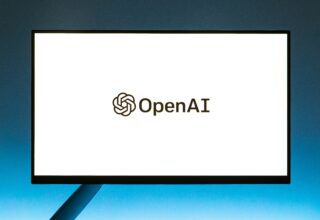By becoming a member of our site, you can add the content you like to your favorites, and present the content you have produced or liked on the internet to our site visitors with the send content option.
Zaten bir üyeliğiniz mevcut mu ? Giriş yapın
By becoming a member of our site, you can add the content you like to your favorites, and present the content you have produced or liked on the internet to our site visitors with the send content option.
You Can Benefit from All Options Exclusive to Our Members by Registering

Next Content:
Analyzing Bitcoin’s Market Patterns and Predictions
CRISPR’s Power: Genetic Engineering’s Potential and Risks

Under the banner of “CRISPR’s Power: Genetic Engineering’s Potential and Risks,” we embark on a comprehensive exploration of CRISPR technology’s profound impact on genetic engineering. While CRISPR presents unprecedented opportunities for scientific advancement and medical breakthroughs, it also raises a host of ethical, social, and safety considerations that demand thorough examination.
CRISPR, an acronym for “Clustered Regularly Interspaced Short Palindromic Repeats,” represents a revolutionary gene-editing tool derived from bacterial immune systems. Its groundbreaking versatility and precision empower scientists to edit DNA sequences with unprecedented ease and accuracy, effectively redefining the landscape of genetic manipulation across diverse fields, from medicine to agriculture and biotechnology.
Within the realm of medicine, CRISPR’s potential is nothing short of revolutionary. By precisely targeting and correcting disease-causing mutations at the genetic level, CRISPR-based therapies offer a glimmer of hope for conditions that were once deemed incurable. From sickle cell anemia to cystic fibrosis and various types of cancer, CRISPR holds the promise of personalized treatments tailored to individual genetic profiles. Furthermore, the technology enables the creation of genetically modified organisms (GMOs) with enhanced traits, such as disease resistance in crops or improved nutritional content in food, paving the way for agricultural innovation and food security.
However, amid the excitement surrounding CRISPR’s transformative potential, a myriad of ethical dilemmas emerges. Chief among them is the specter of “designer babies,” where CRISPR could be harnessed to manipulate the genetic characteristics of embryos for non-medical purposes, such as enhancing intelligence or altering physical appearance. Such scenarios raise profound questions about the ethical boundaries of genetic engineering, the equitable distribution of access to genetic enhancements, and the potential for exacerbating social inequalities.
Moreover, CRISPR’s remarkable precision is not without its caveats. The technology’s inherent risk of off-target effects and unintended consequences poses significant safety concerns that necessitate rigorous evaluation and oversight. While CRISPR holds immense potential for targeted genetic modifications, the prospect of unintended mutations with unforeseen repercussions, including the emergence of new diseases or unintended alterations to the genome, underscores the importance of caution and thorough risk assessment in its application.
In navigating the ethical and safety considerations surrounding CRISPR, the development of robust regulatory frameworks is paramount. Across the globe, policymakers, scientists, ethicists, and stakeholders are grappling with the challenge of balancing scientific innovation with ethical imperatives and safety standards. Collaborative efforts are underway to establish responsible guidelines that safeguard against the misuse of CRISPR technology while fostering its potential for positive societal impact.
In conclusion, the advent of CRISPR technology heralds a new era of possibility and peril in genetic engineering. Its transformative potential to cure genetic diseases, enhance agricultural productivity, and deepen our understanding of the genetic basis of life is unparalleled. Yet, the ethical, social, and safety considerations it raises demand meticulous attention and deliberation. By approaching CRISPR technology with humility, ethical integrity, and a commitment to responsible innovation, we can harness its extraordinary power to shape a better, more equitable future for humanity.
We offer our respects and wish you a good reading. – Who Learns What? Team
- On-Site Comments































